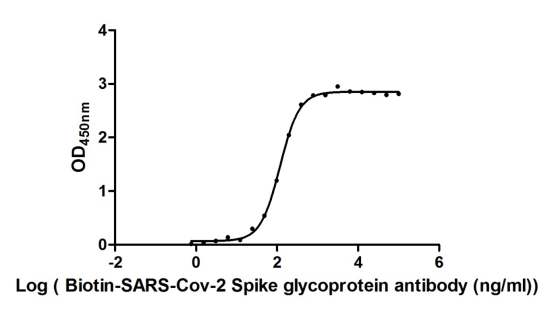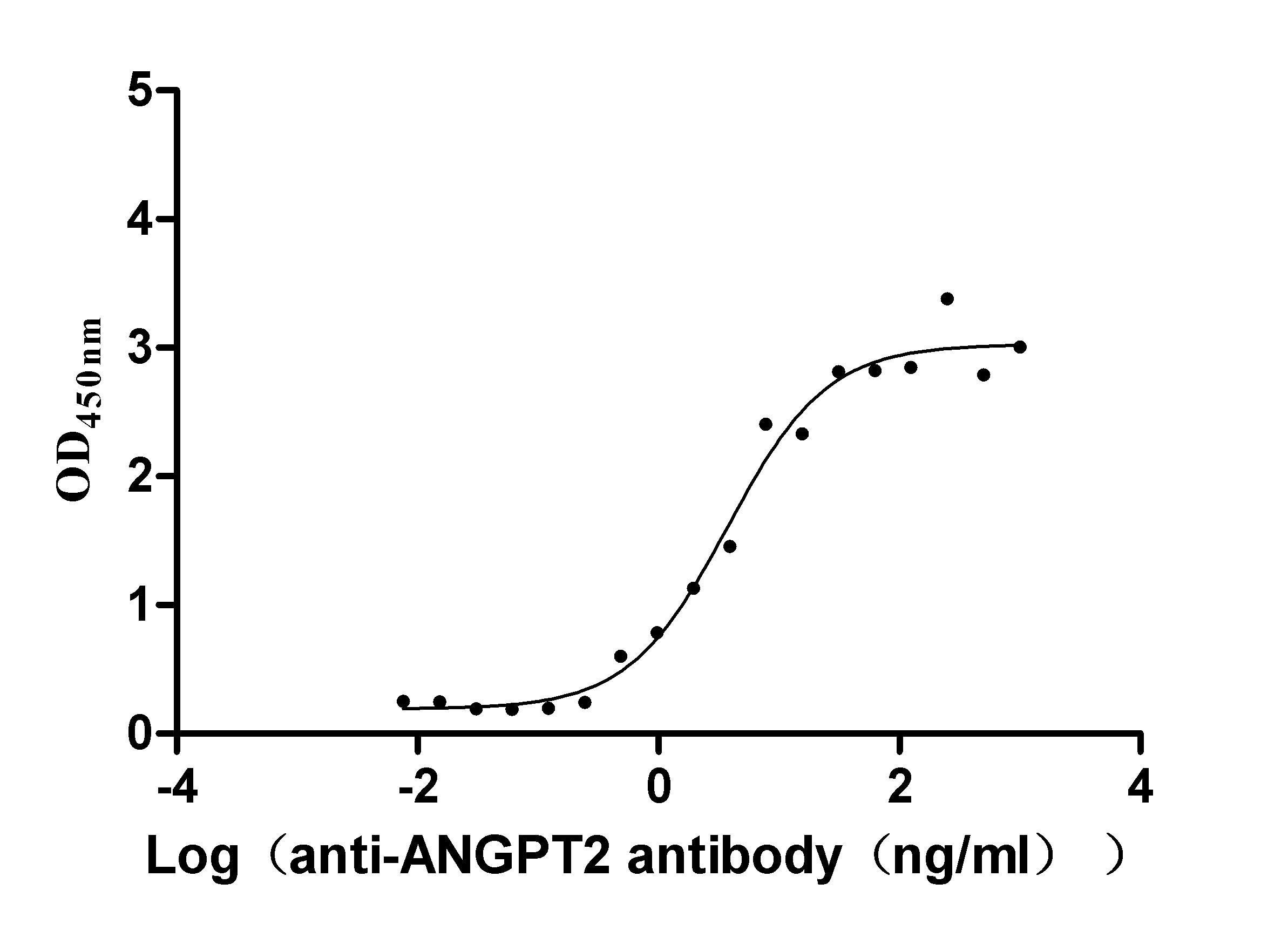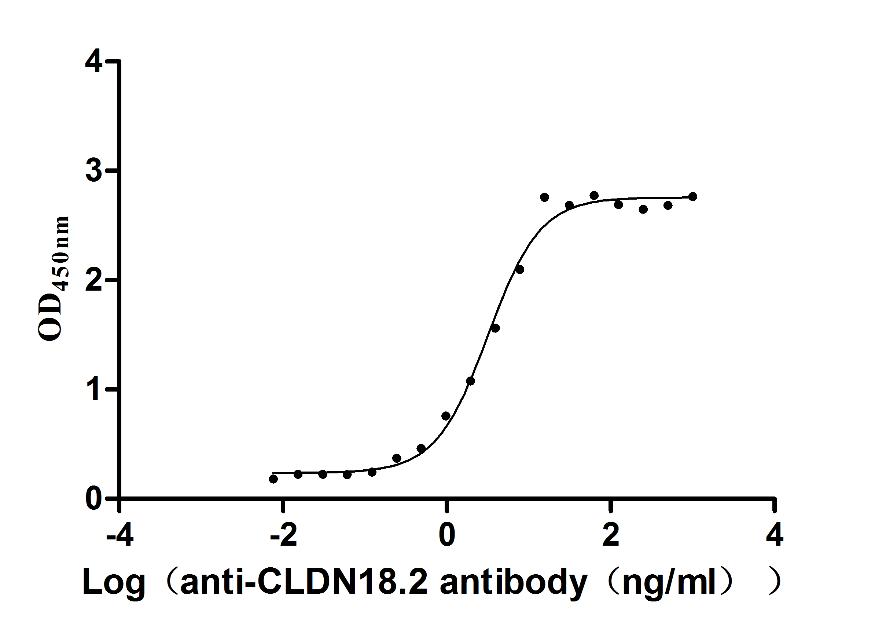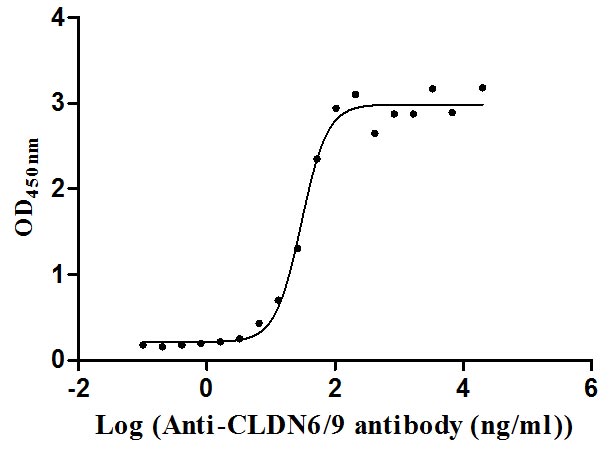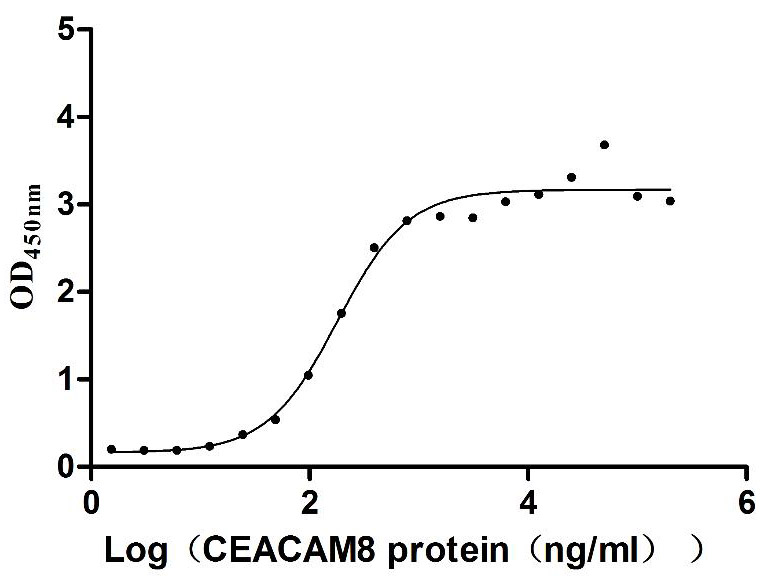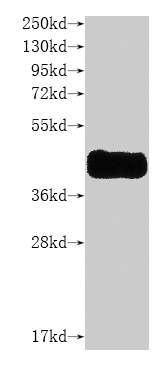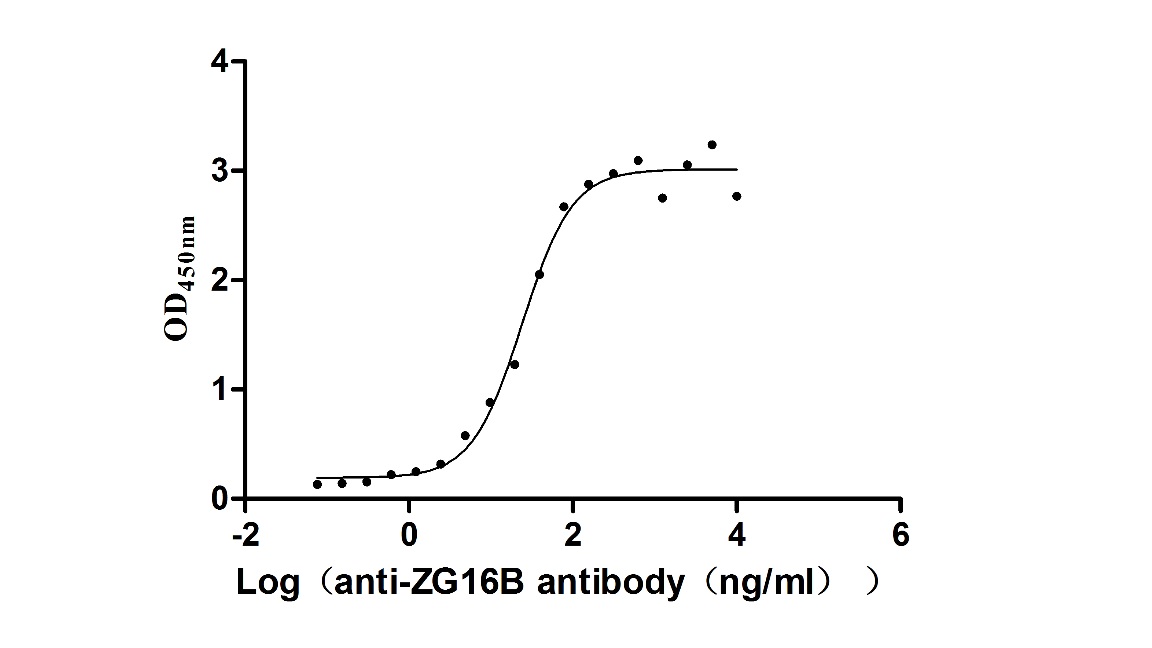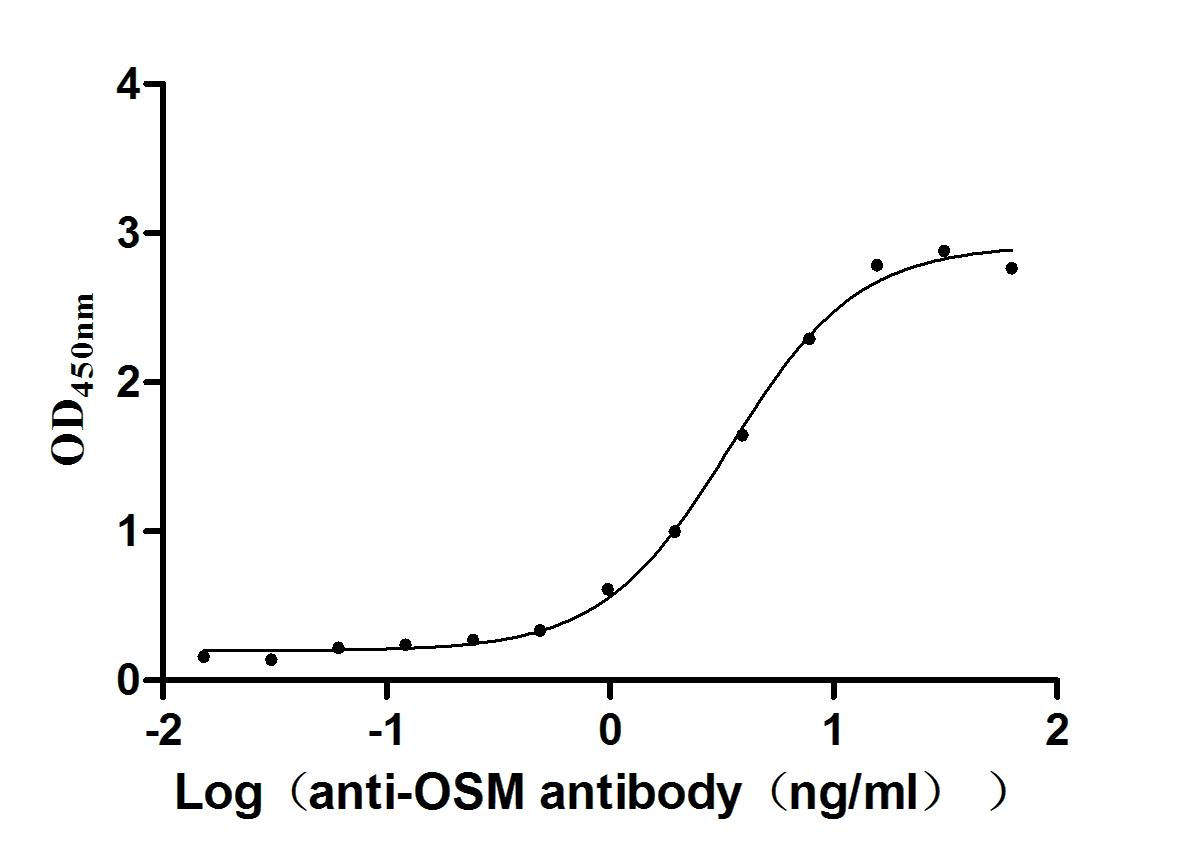Recombinant Human Solute carrier family 2, facilitated glucose transporter member 10 (SLC2A10), partial
-
中文名称:人SLC2A10重组蛋白
-
货号:CSB-YP021547HU
-
规格:
-
来源:Yeast
-
其他:
-
中文名称:人SLC2A10重组蛋白
-
货号:CSB-EP021547HU
-
规格:
-
来源:E.coli
-
其他:
-
中文名称:人SLC2A10重组蛋白
-
货号:CSB-EP021547HU-B
-
规格:
-
来源:E.coli
-
共轭:Avi-tag Biotinylated
E. coli biotin ligase (BirA) is highly specific in covalently attaching biotin to the 15 amino acid AviTag peptide. This recombinant protein was biotinylated in vivo by AviTag-BirA technology, which method is BriA catalyzes amide linkage between the biotin and the specific lysine of the AviTag.
-
其他:
-
中文名称:人SLC2A10重组蛋白
-
货号:CSB-BP021547HU
-
规格:
-
来源:Baculovirus
-
其他:
-
中文名称:人SLC2A10重组蛋白
-
货号:CSB-MP021547HU
-
规格:
-
来源:Mammalian cell
-
其他:
产品详情
-
纯度:>85% (SDS-PAGE)
-
基因名:SLC2A10
-
Uniprot No.:
-
别名:AA450473 ; ATS; facilitated glucose transporter member 10; Glucose Transporter GLUT10; Glucose transporter type 10; glut 10; GLUT-10; GLUT10; GTR10_HUMAN; MGC126706 ; slc2a10; Solute carrier family 2; Solute carrier family 2 member 10; Solute carrier family 2, facilitated glucose transporter member 10
-
种属:Homo sapiens (Human)
-
蛋白长度:Partial
-
蛋白标签:Tag type will be determined during the manufacturing process.
The tag type will be determined during production process. If you have specified tag type, please tell us and we will develop the specified tag preferentially. -
产品提供形式:Lyophilized powder
Note: We will preferentially ship the format that we have in stock, however, if you have any special requirement for the format, please remark your requirement when placing the order, we will prepare according to your demand. -
复溶:We recommend that this vial be briefly centrifuged prior to opening to bring the contents to the bottom. Please reconstitute protein in deionized sterile water to a concentration of 0.1-1.0 mg/mL.We recommend to add 5-50% of glycerol (final concentration) and aliquot for long-term storage at -20℃/-80℃. Our default final concentration of glycerol is 50%. Customers could use it as reference.
-
储存条件:Store at -20°C/-80°C upon receipt, aliquoting is necessary for mutiple use. Avoid repeated freeze-thaw cycles.
-
保质期:The shelf life is related to many factors, storage state, buffer ingredients, storage temperature and the stability of the protein itself.
Generally, the shelf life of liquid form is 6 months at -20°C/-80°C. The shelf life of lyophilized form is 12 months at -20°C/-80°C. -
货期:Delivery time may differ from different purchasing way or location, please kindly consult your local distributors for specific delivery time.Note: All of our proteins are default shipped with normal blue ice packs, if you request to ship with dry ice, please communicate with us in advance and extra fees will be charged.
-
注意事项:Repeated freezing and thawing is not recommended. Store working aliquots at 4°C for up to one week.
-
Datasheet :Please contact us to get it.
靶点详情
-
功能:Facilitative glucose transporter required for the development of the cardiovascular system.
-
基因功能参考文献:
- We document a spectrum of ophthalmic manifestations of arterial tortuosity syndrome with universal findings of myopia, corneal thinning, and a propensity for corneal ectasia leading to keratoconus or keratoglobus. Heterozygous carriers may develop keratectasia after corneal refractive surgery PMID: 28726533
- GLUT10 is a dehydroascorbic acid (DAA) transporter and DAA transport is diminished in the endomembranes of fibroblasts from Arterial Tortuosity syndrome patients. PMID: 27153185
- GLUT10 deficiency leads to oxidative stress and non-canonical alphavbeta3 integrin-mediated TGFbeta signalling associated with extracellular matrix disarray in arterial tortuosity syndrome skin fibroblasts PMID: 26376865
- 100 ATS patients have been described, and 21 causal mutations have been identified in the SLC2A10 gene. Study expanded the allelic repertoire of SLC2A10 by identifying two novel mutations. PMID: 25373504
- Two SNPs replicated: the paternal rs2471083-C allele (located near the imprinted KCNK9 gene) and the paternal rs3091869-T allele (located near the SLC2A10 gene) increased BMI equally (beta = 0.11 (SD), P<0.0027) PMID: 25078964
- Data show that homozygous and compound heterozygous changes found in PLOD1 and SLC2A10 may confer autosomal recessive effects, and three MYH11, ACTA2 and COL3A1 heterozygous variants were considered as putative pathogenic gene alterations. PMID: 22001912
- Our data demonstrate that genetic polymorphism of the SLC2A10 gene is an independent risk factor for PAD in type 2 diabetes. PMID: 20735855
- expression in adipose tissue PMID: 12890477
- variation in the coding region of SLC2A10 does not contribute substantially to the pathogenesis of type 2 diabetes PMID: 12941788
- The SLC2A10 gene encodes a glucose transporter and is located on chromosome 20q13, where evidence has been found for linkage to type 2 diabetes (T2D) in multiple studies. PMID: 15936967
- Complex regulatory mechanism of SLC2A10 expression through interaction of multiple transcription factors on basal promotor and prescence of distal repressor sequence suggests fine modulation of GLUT10 levels critical for glucose homeostasis. PMID: 16051383
- GLUT10 deficiency is associated with upregulation of the TGFbeta pathway in the arterial wall, a finding also observed in Loeys-Dietz syndrome, in which aortic aneurysms associate with arterial tortuosity PMID: 16550171
- SLC2A10 genetic variations do not appear to be major determinants for type 2 diabetes susceptibility in the Taiwanese population. PMID: 16586067
- the c.243C>G mutation in the Middle Eastern families may have a common origin and shared ances PMID: 18565096
- analysis of a missense and a recurrent mutation in SLC2A10 gene of patients affected with arterial tortuosity syndrome PMID: 18774132
- Patients of Kurdish origin who display arterial tortuosity associated with skin hyperextensibility, joint hypermobility, and characteristic facial features may carry a novel non-sense mutationin in the SLC2A10 gene. PMID: 18818946
显示更多
收起更多
-
相关疾病:Arterial tortuosity syndrome (ATS)
-
亚细胞定位:Endomembrane system; Multi-pass membrane protein. Cytoplasm, perinuclear region.
-
蛋白家族:Major facilitator superfamily, Sugar transporter (TC 2.A.1.1) family, Glucose transporter subfamily
-
组织特异性:Widely expressed; highest levels in liver and pancreas.
-
数据库链接:
Most popular with customers
-
Recombinant Severe acute respiratory syndrome coronavirus 2 Spike glycoprotein (S), partial (Active)
Express system: Mammalian cell
Species: Severe acute respiratory syndrome coronavirus 2 (2019-nCoV) (SARS-CoV-2)
-
Recombinant Dog Angiopoietin-2 (ANGPT2) (Active)
Express system: Mammalian cell
Species: Canis lupus familiaris (Dog) (Canis familiaris)
-
Recombinant Macaca fascicularis Claudin 18.2 (CLDN18.2)-VLPs (Active)
Express system: Mammalian cell
Species: Macaca fascicularis (Crab-eating macaque) (Cynomolgus monkey)
-
Recombinant Human Claudin-9 (CLDN9)-VLPs (Active)
Express system: Mammalian cell
Species: Homo sapiens (Human)
-
Recombinant Human Carcinoembryonic antigen-related cell adhesion molecule 6 (CEACAM6) (Active)
Express system: Mammalian cell
Species: Homo sapiens (Human)
-
Recombinant Human C-C chemokine receptor type 8 (CCR8)-VLPs (Active)
Express system: Mammalian cell
Species: Homo sapiens (Human)
-
Recombinant Macaca fascicularis zymogen granule protein 16 homolog B (ZG16B) (Active)
Express system: Mammalian cell
Species: Macaca fascicularis (Crab-eating macaque) (Cynomolgus monkey)
-
Recombinant Human Oncostatin-M (OSM), partial (Active)
Express system: Mammalian cell
Species: Homo sapiens (Human)


